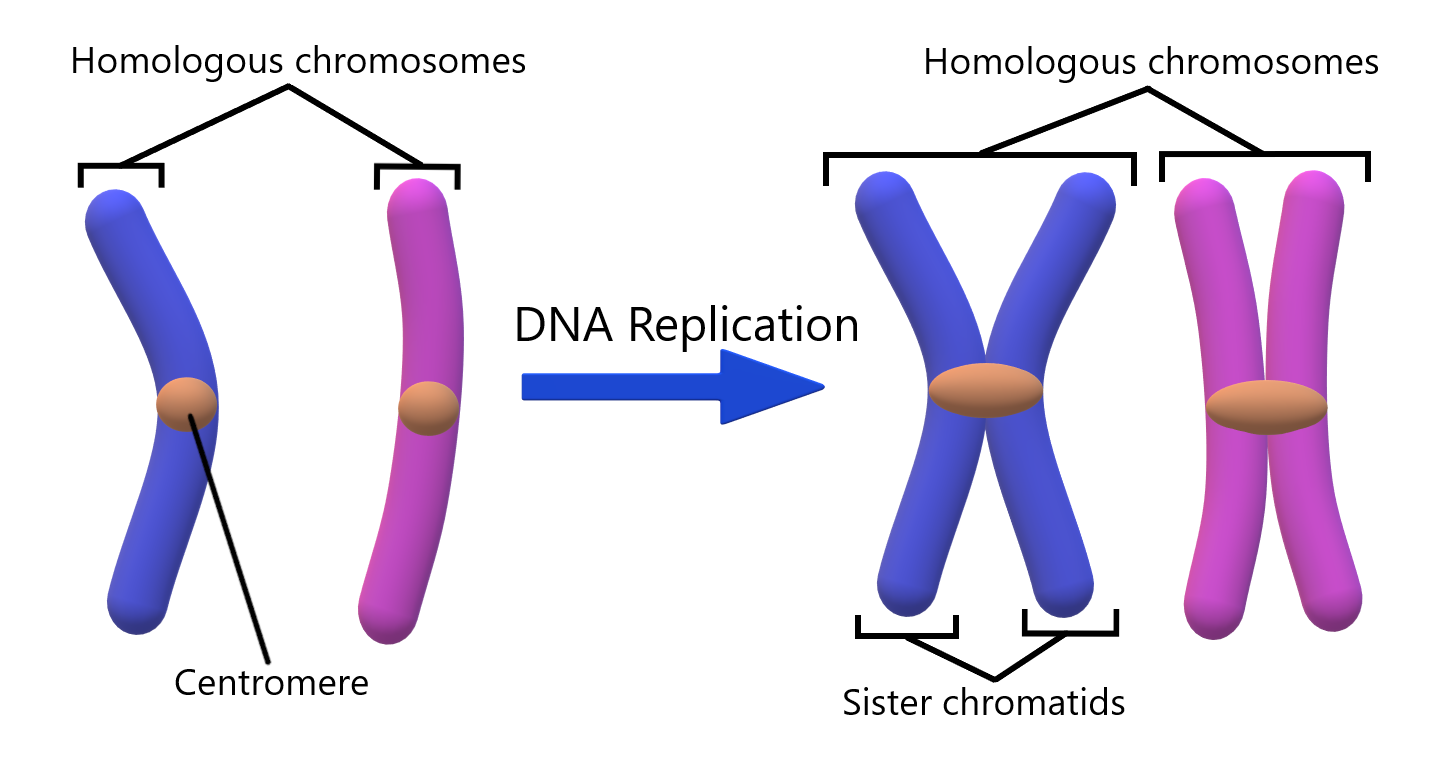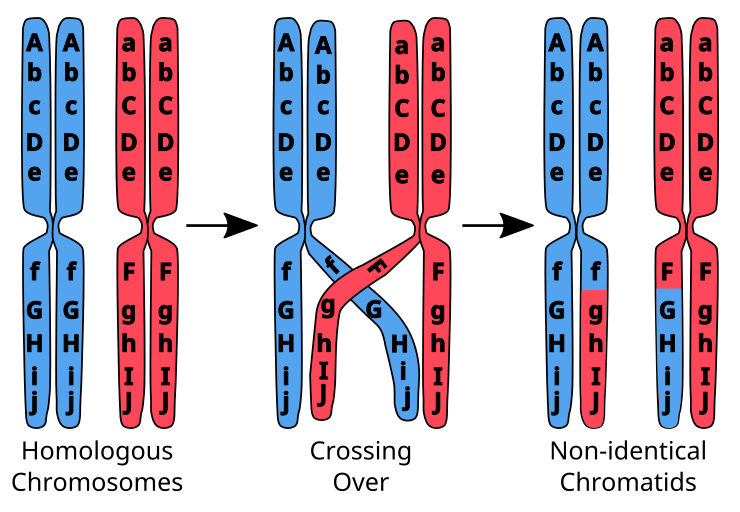Table of Contents
Reductional Division and Gametes
Meiosis is a process of nuclear division that reduces the number of chromosomes in the resulting cells by half. Thus, meiosis is sometimes called “reductional division.” For many organisms the resulting cells become specialized “sex cells” or gametes. In organisms that reproduce sexually, chromosomes are typically diploid (2n) or occur as double sets (homologous pairs) in each nucleus. Meiosis reduces the number of chromosomes to a haploid (1n) or single set. This reduction is significant because a cell with a haploid number of chromosomes can fuse with another haploid cell during sexual reproduction and restore the original, diploid number of chromosomes to the new individual.
Homologous Chromosomes
As stated above, sexually-reproducing organisms have a double set of chromosomes. This double set results from the union of gametes during fertilization. Each gamete contains one set of chromosomes and these combine to form the diploid number of chromosomes for that species. Thus, the resulting zygote contains two copies of each chromosome (one from each parent). These chromosome pairs are called homologous chromosomes. Homologous chromosomes have the same genes and these genes are found at the same loci (positions) on each chromosome.
Genetic Recombination in Meiosis
As in mitosis, meiosis is preceded by replication of each chromosome to form two chromatids attached at a centromere.

However, reduction of the chromosome number and production of new genetic combinations result from two events that don’t occur in mitosis. First, meiosis includes two rounds of chromosome separation. Chromosomes are replicated before the first round, but not before the second round. Thus, the genetic material is replicated once and divided twice. This produces half the original number of chromosomes. The lining up of the homologous chromosomes right before the first separation results in a random sorting of chromosomes into the gametes. This is called independent assortment.
Second, during an early stage of meiosis each chromosome (comprised of two chromatids) pairs along its length with its homolog. This pairing of homologous chromosomes results in a physical touching called synapsis, during which the four chromatids (a tetrad) exchange various segments of genetic material. This exchange of genetic material is called crossing-over and produces new genetic combinations. During crossing-over there is no gain or loss of genetic material. But afterward, each chromatid of the chromosomes contains different segments (alleles) that it exchanged with other chromatid.


The Stages of Meiosis
Although meiosis is a continuous process, we can study it more easily by dividing it into stages just as we did for mitosis. Indeed, meiosis and mitosis are similar, and their corresponding stages of prophase, metaphase, anaphase, and telophase have much in common. However, meiosis is longer than mitosis because meiosis involves two nuclear divisions instead of one. These two divisions are called meiosis I and meiosis II. The chromosome number is reduced (reductional division) during meiosis I, and chromatids comprising each chromosome are separated in meiosis II. Each division involves the events of prophase, metaphase, anaphase, and telophase.




